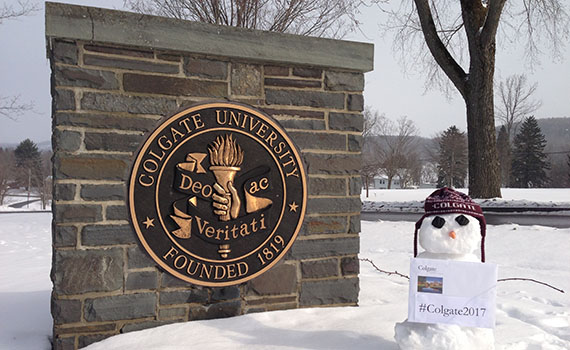Some talented students are now opening acceptance letters from Colgate University, probably followed by a bit of joyful screaming and jumping around, as evidenced by the first tweeted mention of excitement at 2:41 p.m., March 21.
The tweet says it all; “Yay, accepted to Colgate University 3/13 !!!!!!!!!”
The Office of Admission sent a total of 8,370 letters this week, both of acceptance and denial, to 140 different countries, 49 states, and the District of Columbia. Vice President and Dean of Admission Gary Ross said the notices went out a week earlier than last year in an effort to make it easier for accepted students to visit during spring vacation.
According to Ross, the Class of 2017 is one of the two strongest classes based on common academic measurements. The acceptance rate decreased from 28.8 percent in 2012 to 26 percent this year. Final enrollment figures are expected in June.
Newly accepted students are invited to join the Class of 2017 Facebook group, and to visit the class webpage, which contains important information from the dean of first year students, including details about arrival day, pre-orientation programs, and more. Follow some of the excitement on Storify.
This class marks the first time all applications were processed without paper, as admission staff read everything through a new online system. There was also more to read.
“We had a 7.4 percent increase in applications, and that resulted in just about 600 more applications than what we had a year ago,” said Ross. The Class of 2017 marks his 15th as dean.
The experience of seeing a new class form was particularly exciting for admission counselor Alana Plaus, who is one of the newer members in the department. Plaus covers much of the Southwest, Texas, and select spots in the Northeast. She was surprised at the depth and honesty found in student essays.
“People really open up,” Plaus said. “It makes you feel honored that students are willing to share so much without knowing you. It was also nice to put a face with the application after traveling to Texas and the other regions I cover. It’s really exciting and validates the work we all did in the fall.”
Increases in domestic applications over last year include: Texas (39 percent), Florida (23 percent), and California (20 percent). International applications increased by 24 percent over last year.
